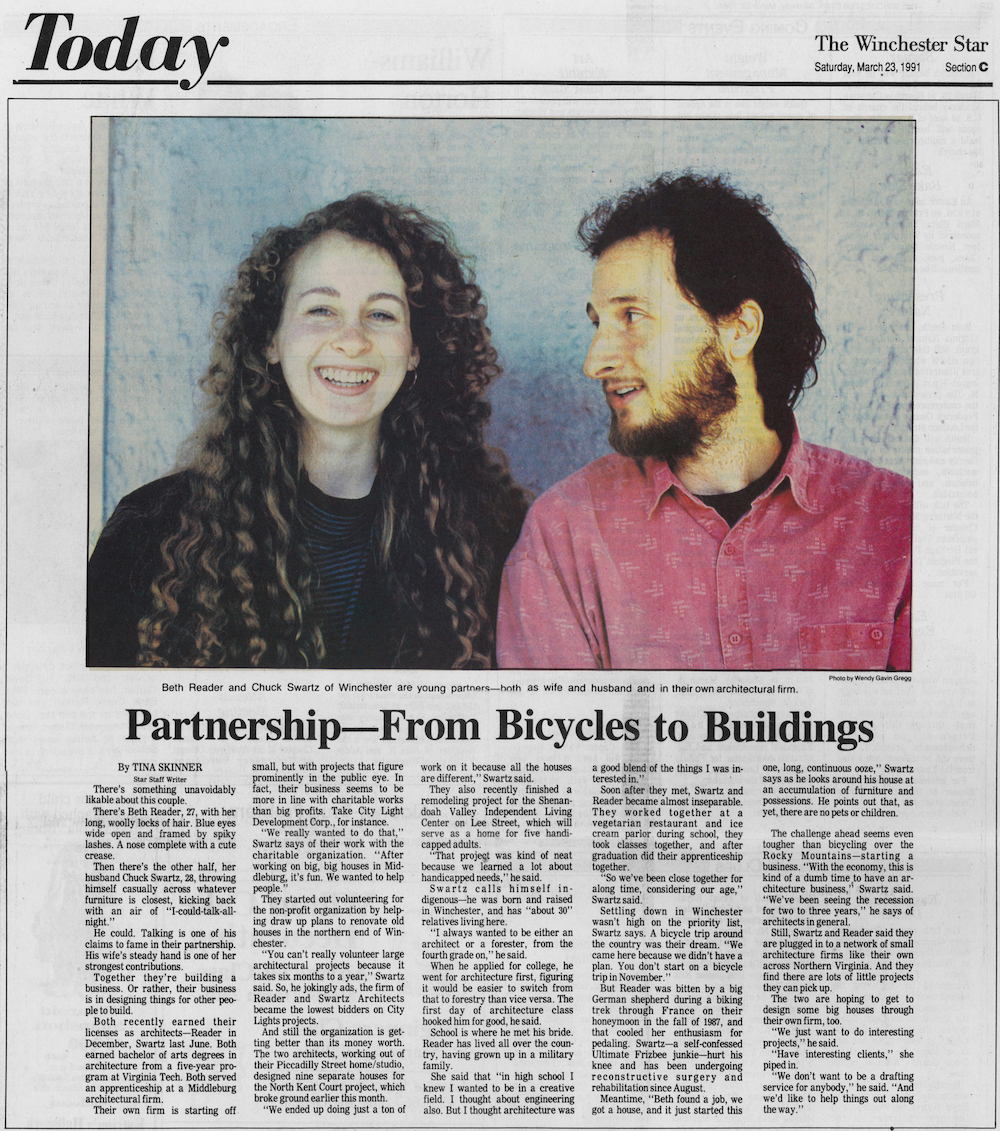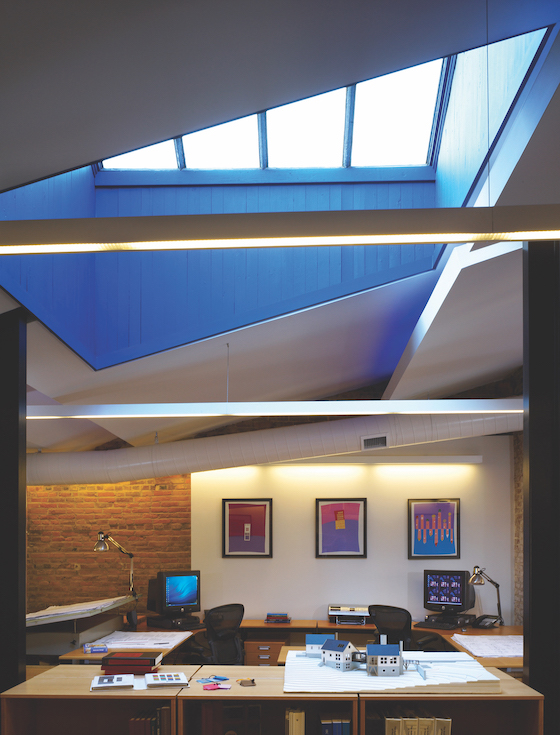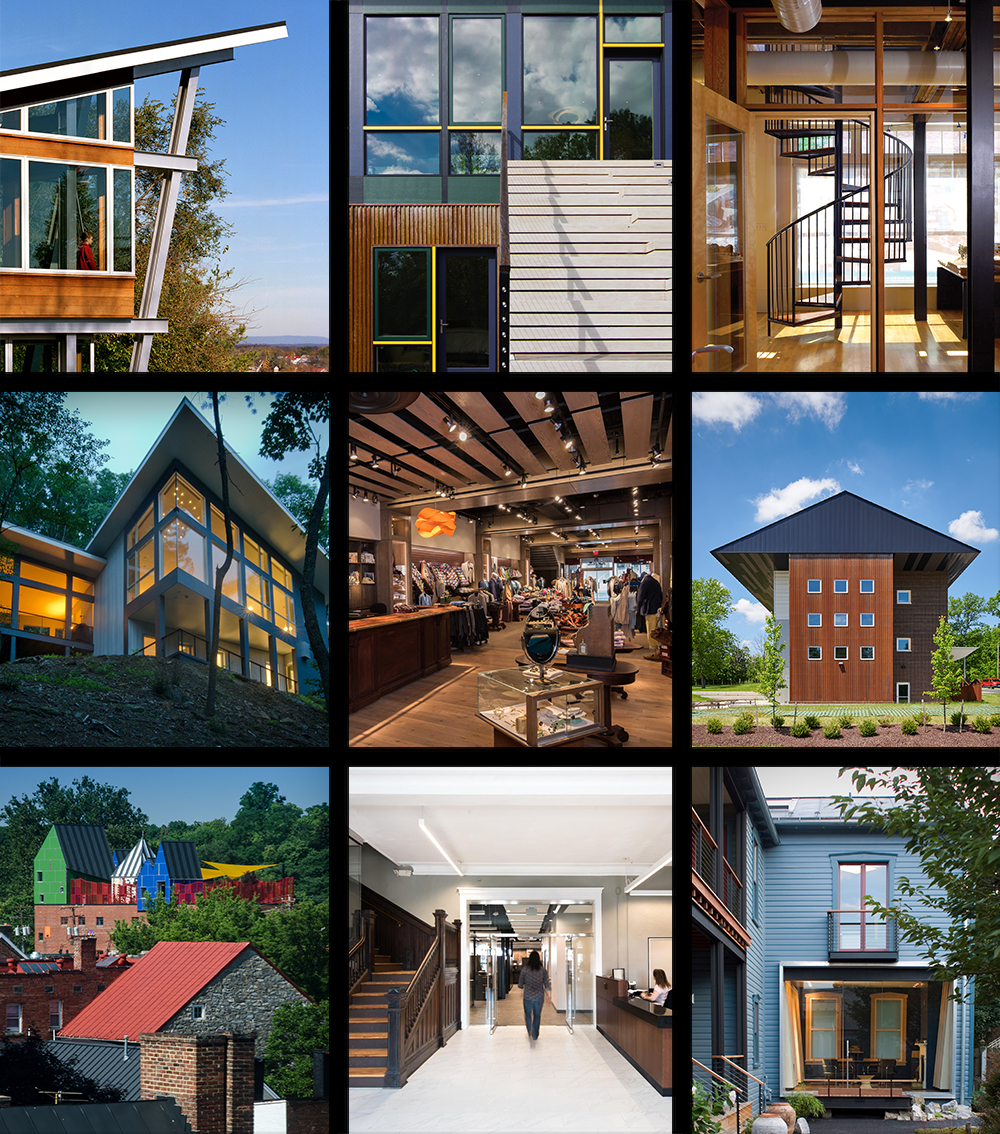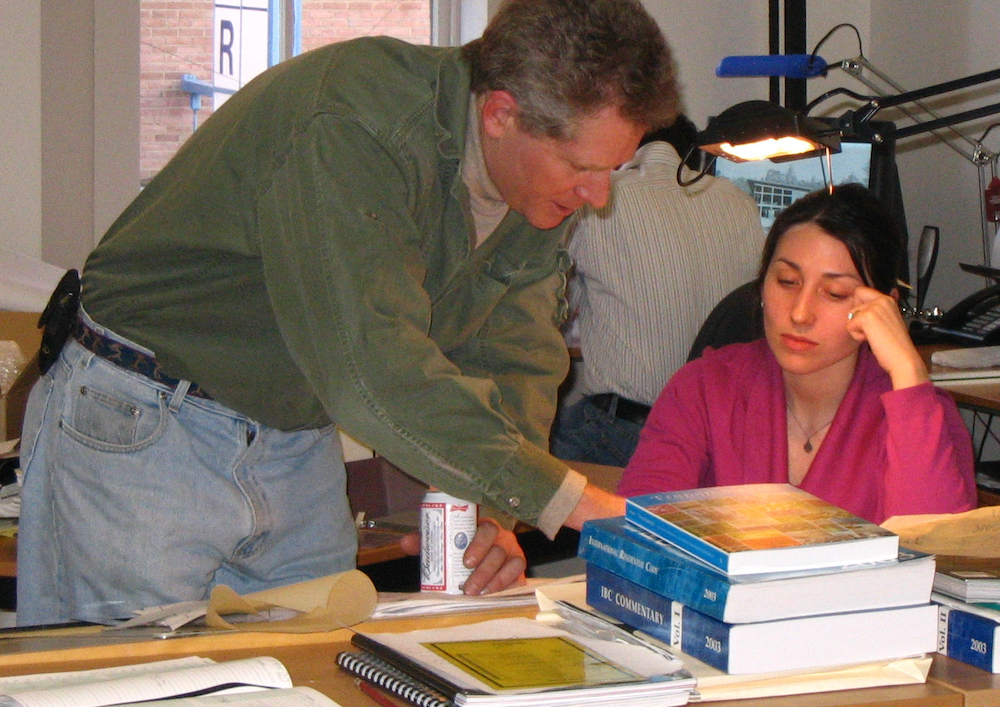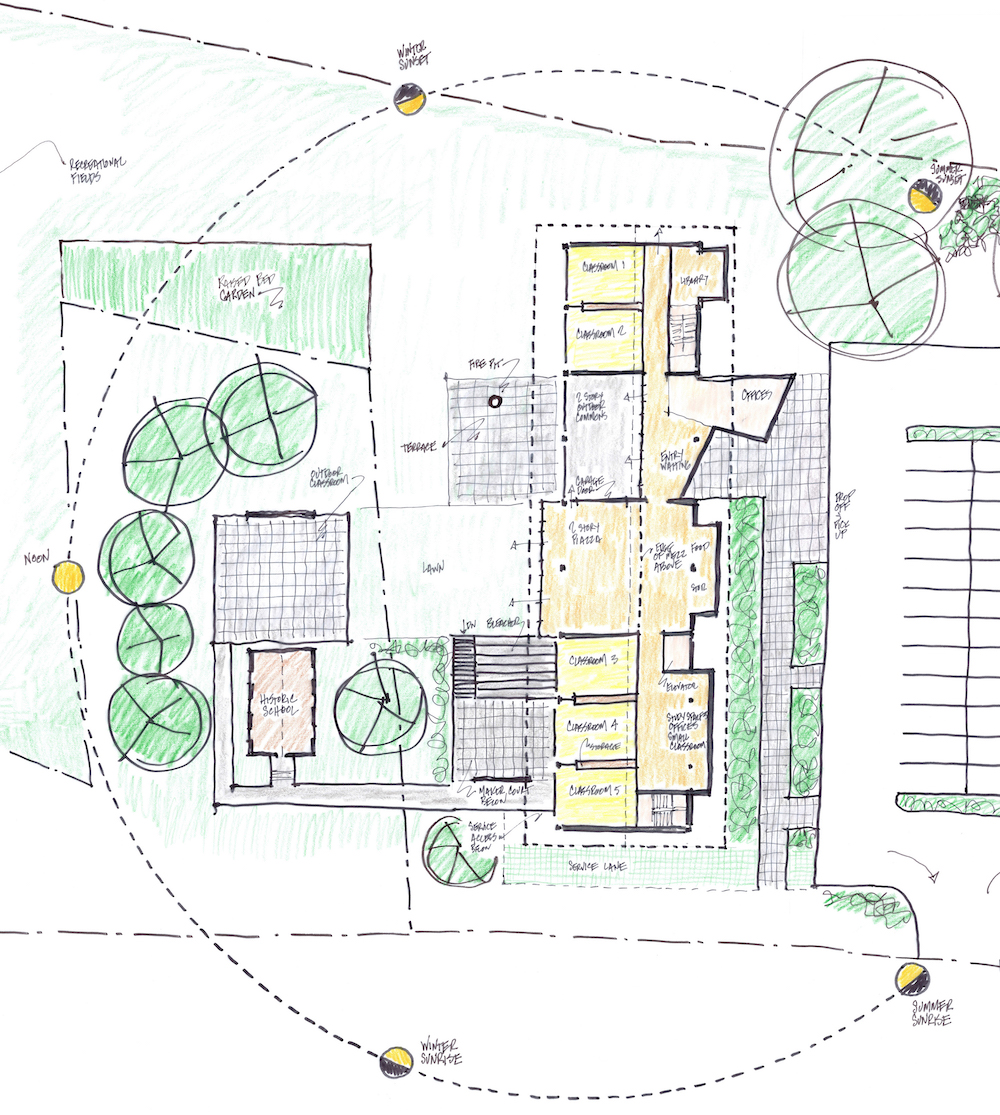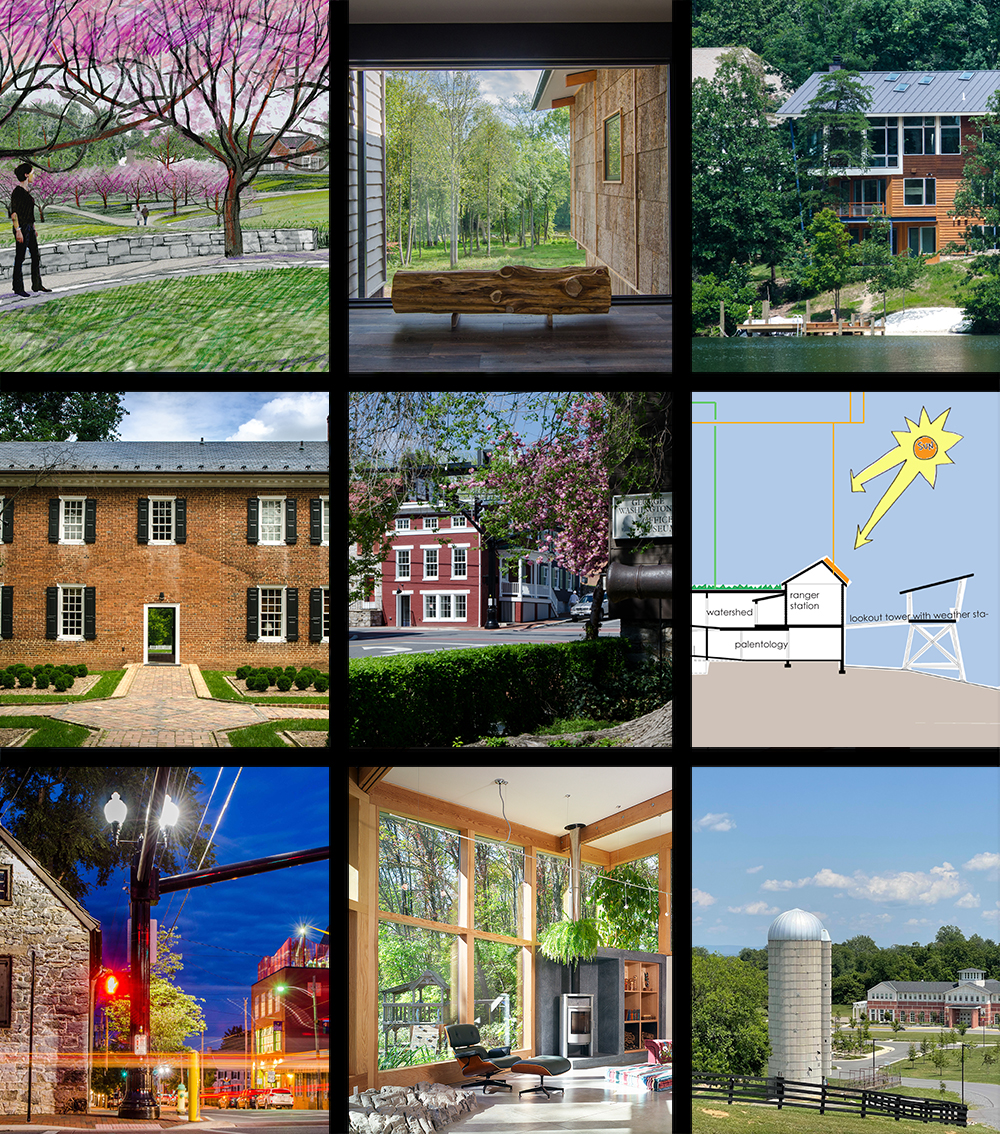AN ABBREVIATED HISTORY OF THE OFFICE IN THREE PARAGRAPHS
Chuck Swartz and Beth Reader met in architecture school at Virginia Tech. After graduation, they moved to Chuck’s hometown of Winchester, Virginia to work and to plan a bicycling trip across the country to “figure out where we want to live.” A knee injury, jobs in separate offices (and later in the same office), and, ultimately, a building recession killed the biking pilgrimage and the quest to find the “ideal place.”
The husband-and-wife architecture firm of Reader & Swartz Architects strategically began during the 1990 recession with no clients, no projects, no prospects, no money, a Golden Retriever named Mabel, and two young architects’ irrational sense of optimism.
Thirty years later, we now have clients, projects, prospects, a Soft-Coated Wheaten Terrier named Charley, and an office full of “youngish” people with irrational senses of optimism. Over the years, we have managed to get published for doing interesting work, and have won design awards, but most importantly, we have had the privilege of working with a lot of great people.
OUR OFFICE ENVIRONMENT
No cubicles, no walls, no corner office. We work in an open studio environment, which encourages a collaborative design process. The open studio is key, in order for us to collectively navigate design and construction situations. Clients and builders are encouraged to participate in working with us on projects. The designs are truly better when our clients are engaged, and the people who build them are an active part of the design process. Our collective span of knowledge allows us to work on a wide variety of architectural projects and helps us to compensate for Chuck’s astonishing lack of computer skills.
BEING GENERALISTS
As a firm, we purposely do not specialize in any one building type or style. Instead, we strive to be experts at creating imaginative solutions for our clients. From museums and big houses, to schools and little houses, to offices and historic buildings, every project has its own unique site and programmatic needs. We work on architecture projects here, in the Shenandoah Valley of Virginia, as well as projects in Northern Virginia, West Virginia, and Maryland. We have also had projects built in Vermont, New Mexico, North Carolina, and Pennsylvania. We have been successful at working on a wide variety of projects because we work closely with our clients, builders, and consultants. We have found that this team approach helps keep projects on budget, maximizes the design potential of projects, and allows our clients to become more involved decision makers. We always look at problems from a fresh viewpoint. Our lack of specialization encourages questioning, listening, and humbleness, while preventing complacency, arrogance, and sloth.
ALL YOU NEED IS A ROPE, AN APPLE CRATE, AND A BLANKET TO MAKE A PLAY
(Meaning; being open-minded, enthusiastic, and up for almost anything)
We take whatever we are given, and push it for all it’s worth. New construction, renovations, and additions all come with unique sets of rules and challenges. Sometimes difficult budgets, sizes, or sites can yield wonderful results. But wonderful results just don’t appear, you have to work at them. Making a building is difficult. It’s more like a marriage or raising children, and less like picking out a car. Just about anything worth a darn takes hard work, determination, imagination, and a sense of purpose (and humor).
“About the only thing that is pretty easy and turns out great without much thought or work is garlic bread.” – Chuck Swartz
WORKING TOGETHER
We include builders as part of the project team, from the early stages of schematic design, through construction completion. We consider all of the people involved in the construction process to be experts in their fields, and we enjoy working with, and learning from, them.
What a client wants, what a client wants to spend, and the size of the project almost never align. Working with clients to define the project is one of the most important skills and services that an architect can bring to the table. Input from everyone involved early on helps build the relationships necessary to achieve a common-goal. By the time the project is ready to be built, the goals, values, and priorities are well established and agreed upon. Just as important, may be the trust and understanding developed between the owner, architect, and builder before any construction has begun.
BABY STEPS – AS A PROFESSIONAL METHODOLOGY
Let’s face it, designing and constructing a building can be very overwhelming. Clear communication channels are vital to a project. Client feedback helps us work on the project in a mindful and thoughtful way. All clients are different, and have different expectations in mind. Working with a client in small steps, all along the way, ensures that the client’s needs, wants, expectations, and budget can be prioritized. With these “baby steps”, the client’s understanding of the ideas, and the short and long term costs grows. This allows for the client to be more informed and more comfortable with the many decisions involved in the construction process.
SITE AND ENVIRONMENT IN ARCHITECTURE
The history of the site and its geography, as well as the feel of the place, are all important to making a building which makes sense in its context, whether that be in the Shenandoah Valley landscape or on a downtown street. Where the sun comes up, arcs through the sky, and sets; prevailing winds; good / bad views; water flow; topography; trees, plant life, and vegetation are all important, from the early decisions to the final details.
In addition to how the building sits on the land, we consider the building’s impact in our larger environment. Carefully considering the products and materials that go in to making the building; how to orient the building with the sun and passive solar strategies; smart insulation and other energy usage reduction strategies; and the ideas and principals of LEED, Passive House, and sustainable green building practices are always in our consciousness, and are often brought to the forefront more clearly with the aims of environmentally aware clients.
